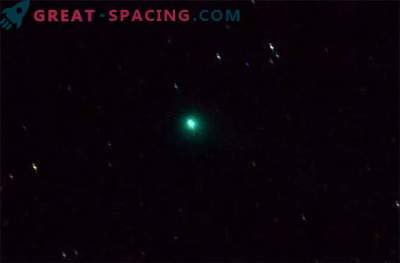
A comet the size of a small mountain and as solid as a pile of stone, flew past Mars, blinding space enthusiasts to a rare encounter.
The comet, known as Siding Spring, reached its closest point to the Red Planet at 2:27 pm on Sunday, flying at a speed of about 12,600 miles per hour.
At its closest point, Siding Spring was located at a distance of 140,000 km (86,992 miles) from Mars - which is very close by astronomical standards.
Scientists have reported that the passage of a comet, also known as C / 2013 A1 and about a mile wide, represents a unique opportunity to study its effect on the atmosphere of Mars.
“What could be more exciting than the passage of a huge body, such as a comet, with which we can observe how the atmosphere will react?”, Says Nick Schneider, NASA Maven mission lead to Mars.
"This is a great opportunity to learn," he added.
A whole fleet of orbiting satellites and robots on the surface of Mars were aimed at the passage of a comet, hoping to capture a rare event and collect such valuable data.
MAVEN, one of the most recent NASA orbiters, sent a signal to Earth that it had no damage and was operating normally. Recall that MAVEN maneuvered for three hours, avoiding collisions with high-speed dust particles emanating from the cloud behind the comet. “We are pleased that the spacecraft has gone through this and we are looking forward to the first results of our observations,” said Bruce Djakovski, the main investigator of the MAVEN mission.
Comet - a ball of ice, dust and pebbles, is believed to have originated billions of years ago in the Oort Cloud, a distant region of space on the edge of the solar system.
As the comet sped through space, it created a meteor shower from debris, which, scientists were afraid, could damage the lining of a valuable spacecraft.
"Despite the fact that garbage is just dust particles, traveling at such a speed, it can damage solar panels or power lines," Schneider said.
Before the comet went into orbit around the Red Planet, NASA corrected the Mars Reconnaissance Orbiter, Mars Odyssey and Maven orbits to avoid damage from the comet's high-speed debris.
Later, all three orbiters sent a signal to Earth, which continues to operate normally.
The comet flew for over a million years, for the first time to pass alongside Mars. It will take another million years to complete the next loop around the sun.
The comet was discovered by Robert McNaught at Siding Spring Observatory in Australia in January 2013.











































